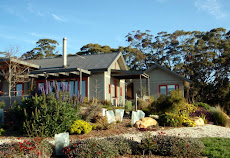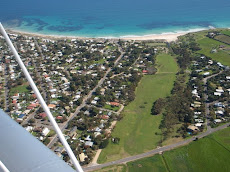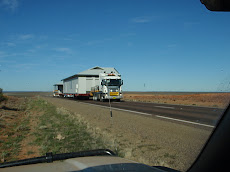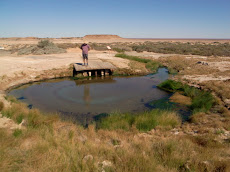Some may think Ian has written all the blogs – largely true but they do get edited and bits added in between battling with the technology! I want to add a note about rock art and dating of aboriginal life in Australia. For me Mungo National Park back in south western NSW where we arrived on the second day from home is one of the most fascinating parts of our trip. During the ice ages, Lake Mungo was one of a chain of freshwater lakes along a channel of the Lachlan River where Aboriginal people fished and camped. The lunettes (or walls as in Walls of China) contain preserved campfires, cooking hearths and burials. Dry since 18,000 years ago but with people continuing to live near soaks, the lakes preserve one of the longest continual records of Aboriginal life in Australia, dating from 50,000 years ago. Dating of ancient burials show that these are the oldest known fully modern humans (homo sapiens sapiens) outside Africa. This is also where the worlds’s largest collection of over 450 fossil human footprints was discovered, dated between 19-23,000 years old.
Pastoral activity has been a constant since the arrival of white settlers, the semi-arid Mungo area being no exception since the 1850s when the old Gol Gol station was established and the Mungo woolshed (see photo) built around 1869. Another famous woolshed was at Kinchega – once a 63 stand of shearers, on (what remains of) the Darling River; at its height the pastoral lease extended from Menindee to Broken Hill and covered an area over 800,000 hectares. In what became a familiar story, land degradation and extinction of native animal species was caused by drought and rabbits, and Aboriginal people were decimated by disease and moved to gover
Tourists see only a fraction of Aboriginal rock art, either as painting or petroglyphs/engravings. Our first viewings were the ochre and charcoal paintings at Arkaroo Rock just inside the Flinders Ranges National Park north of Hawker, and the engravings at Chambers Gorge, both mentioned earlier by Ian.
Then Uluru and Nitmiluk Gorge.
Kakadu has a great viewable collection, particularly in the sandstone shelters at Nourlangie Rock (the anglicised version of what is actually Burrunggui - higher part, and Angbangbang, lower part) and Ubirr. Arnhem Land is accessible only be permit,but the Kimberley has masses of sites, not to mention the Bradshaw figures we hope to see about which there is so much speculation.
Occupation dates are still subject of debate: using thermoluminescence methods, occupation ages in Kakadu of at least 50,000 years before present (ybp) have been obtained, but the paintings themselves can’t be

Whatever, it is alwa
Sorry about the lecture – must be a hangover of my long ago fine arts degree! Also triggered by Katie asking about dates of paintings. Be glad I haven’t started on my current passion of indigenous plants.

















































































































No comments:
Post a Comment